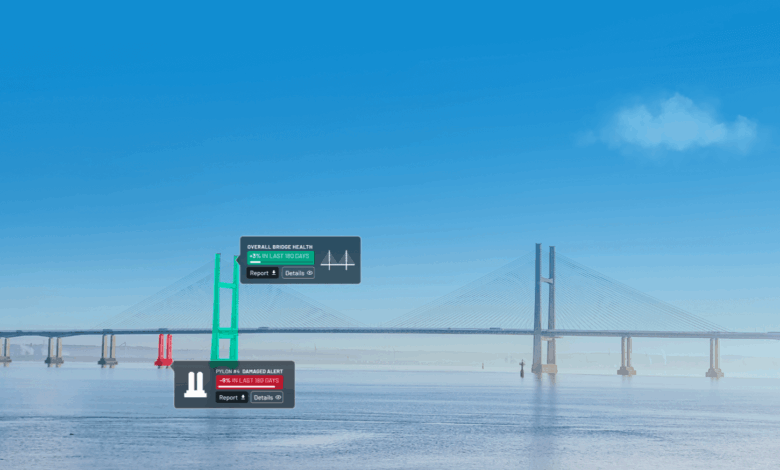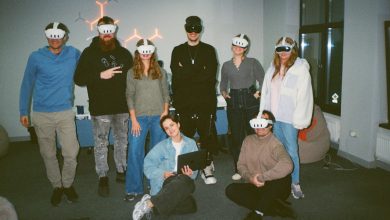
The condition of the UK’s built assets is nearing a crisis point. Most of our modern structures were built in a 20-year window, from the 1950s to the 1970s, and are now simultaneously reaching an age where deterioration is accelerating. A recent report estimates that 1 in 24 bridges is currently “sub-standard”, and three thousand of the UK’s busiest bridges are in “poor” condition. A decline in structural integrity does not occur overnight, which means regular monitoring is necessary to prevent our infrastructure from failing. Proactive management of our ageing assets is becoming ever more vital to keep our infrastructure operational.
However, the current management and maintenance process continues to rely on scattered photos, paper forms, and subjective condition ratings. Examinations are conducted manually, requiring inspectors to visit each site, which is time-consuming for a specialist and over-stretched workforce. The processes involved are expensive, necessitating asset owners spending millions of pounds annually on inspections alone. Due to constraints from human error and subjective techniques, the results are often inconsistent and unreliable, even with the substantial time and money invested in this process. This management method is becoming outdated. It’s not just inefficient, it’s a missed opportunity because better inspections lead to better decisions.
The importance of custodianship
What has further escalated this problem is a change in asset stewardship – individuals responsible for overseeing specific assets. In the realm of infrastructure, there used to be a strong sense of custodianship as asset managers dedicated their careers to managing a small number of assets, allowing them to deeply understand the history of those structures. Consequently, the limitations of subjectivity were less prominent, and the changes within a structure were more apparent since the same person managed the same asset year after year. However, with many of these asset managers retiring, owners now rely far heavier on consultants to perform their duties, resulting in a loss of this long-term perspective. This leads to data in current asset management systems that is unsuitable for making the necessary trade-offs in decisions for maintaining large infrastructure estates, and as time has passed, this issue has worsened.
The implementation of ‘Digital Custodianship’ could help solve this problem by combining structured data, AI, and human expertise to restore the insight and foresight that once defined great asset stewardship. The technology would examine historic records and, with the assistance of machine learning (ML) and AI, use that information to predict how the condition of an asset is likely to evolve. This would help asset managers effectively prioritise maintenance interventions.
Not only could this help predict impending asset defects, but it could also help create better representations and understanding of how those defects change over time. Computer vision can quantify measurements of how long a crack/defect is, and then the tech could overlay historic photos to see how the defect has evolved, giving engineers a real sense of what is happening with the asset and at what speed it is deteriorating. This method combines the expertise and contextual understanding that asset managers bring with AI-enabled data processing to bring back the continuity of knowledge we are losing as traditional asset custodianship diminishes.
But it all starts with better data…
The future of asset management
As well as helping develop Digital Custodianship, AI could be used in the inspection and examination processes which are currently extremely physical and time-consuming tasks. This would make infrastructure monitoring faster, cheaper, and more straightforward, increasing efficiency and reducing the risks associated with infrastructure deterioration, such as collapsing bridges.
Conventionally, inspectors take photographs of the assets they are surveilling, and using those photographs, assign the structure a condition score using a simple 1 to 5 scale. This method has its shortcomings. Using only a condition score makes it impossible for any nuances or context to be captured, and what one inspector may consider a level 3 defect may not be considered so by another. On top of this, the process is extremely time-consuming and is limited by access constraints meaning inspections require road closures. Defects may also be hidden out of sight. This restrictive and subjective method means structural issues are not properly recognised and are often left unaddressed.
Imagine if, with just a phone in hand, engineers could capture high-quality images, tag defects, locate issues, and log condition notes – all structured, synced, and ready for action. After the inspection, every image, note, and tagged defect would then build a long-term view of change. Whether it’s a new asset or one that’s been in service for decades, you’re not just recording what it looks like today – you’re building a digital memory that tracks its condition from day one. That means fewer surprises, better prioritisation, and decisions backed by evidence, not just instinct.
Another method of automated condition monitoring currently being explored is the collection of data using sensors placed on structures. These sensors can be placed on a healthy structure to monitor for future changes, or alternatively, if defects are already identified, sensors such as tell tale crack monitors can be placed on the defect to give asset managers timely information on how that specific defect develops. This sensor data can then be used to train AI models that forecast how a defect will progress and at what point it requires intervention, allowing for effective management and creating a more complete Digital Custodian.
What’s next?
All of this is not to say that AI and technology should replace human decision makers; that is far from the right idea. These individuals have invaluable expertise and contextual understanding that should be combined with AI-enabled data processing, not replaced by it. Currently, too much time and money is being wasted on inspections that do not progress our understanding and miss real defects to the point where they require expensive, disruptive, and time-consuming intervention and repairs. AI has given us a unique opportunity to change this and revolutionise how we manage infrastructure.




